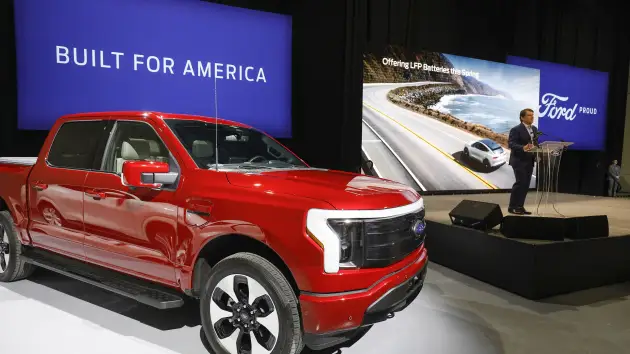Ford Motor is reducing its plans for a $3.5 billion battery plant in Michigan due to labor cost increases, a slower-than-anticipated shift in consumer preference toward electric vehicles, and cost-cutting measures.
The facility was originally announced in February by Ford executives, including Chair Bill Ford and CEO Jim Farley. Its ties to Contemporary Amperex Technology Co., or CATL, a Chinese battery manufacturer, made it a political target very quickly. Although the facility is a fully owned Ford subsidiary, the American carmaker is licensing CATL’s technology to create new lithium iron phosphate, or LFP, batteries for electric vehicles.
Ford announced on Tuesday that it would be reducing expected employment from 2,500 to 1,700 jobs and reducing production capacity by about 43% to 20 gigawatt hours annually. How much less it would invest in the plant was not disclosed by the company. Even with the lowered capacity, the investment would come to roughly $2 billion.
The move continues the auto industry’s recent global retreat from electric vehicles. The vehicles’ lower-than-expected demand is a result of a number of problems, including supply chain and battery technology difficulties and increased costs.
Ford announced plans last month to reduce or postpone investing approximately $12 billion in previously announced electric vehicle (EV) projects, including reductions at the Marshall, Michigan, plant. Additionally, the company plans to defer building a second electric vehicle battery plant in Kentucky.

“We examined every aspect. Ford Chief Communications Officer Mark Truby stated at a media briefing, “They included demand and the expected growth for EVs, our business plans, our product cycle plans, the affordability and business to make sure we can make a sustainable business out of this plant.” “We are now able to confirm that we are proceeding with the plant, albeit with a slightly smaller scale and scope than what we initially announced, after evaluating everything.”
Despite the fact that the company stopped production at the plant for about two months during collective bargaining with the United Auto Workers, according to Truby, the plant is still scheduled to open in 2026. The Ford-UAW workers last week approved a deal that included a path for battery workers at the plant to be included under the record agreement, provided they were organized by the union, and significant wage increases. This marked the end of the negotiations.
When asked for a comment, the UAW did not reply right away.
According to Truby, Ford’s decision to reduce the plans was influenced by rising labor costs. Last month, Ford CFO John Lawler said that labor costs would increase by $850 to $900 for each vehicle assembled under the new agreement.
Lawler declined to provide an estimate of the deal’s total cost to the business, which is set to expire in April 2028. During the course of the agreement, Deutsche Bank projected an increase of $6.2 billion.
“We remain highly optimistic about electric vehicles and our EV strategy, but it’s evident that, although there is growth, it’s not happening at the pace that we and others had anticipated,” stated Truby. “We’re attempting to proceed with caution in this matter.”
Federal and local authorities have reacted politically to the plant, and the citizens of the small Michigan city have protested. In light of the growing tensions between the United States and China, American lawmakers have also attempted to examine the Ford and CATL licensing agreement.
On Tuesday, Truby restated the company’s continued belief that licensing the technology rather than importing batteries from abroad is a better business decision for both the company and the United States. It is anticipated that the plant will manufacture LFP batteries first in the United States.
Ford will switch from using more expensive lithium-ion or nickel cobalt manganese batteries to lithium iron phosphate, or LFP, batteries made at the plant. Ford will be able to boost EV production and profit margins with the new batteries, which are anticipated to provide various advantages at a reduced cost.
Following Tesla, Ford now sources its LFP batteries from CATL. This is done in part to lessen the quantity of cobalt required to produce battery cells and high-voltage battery packs.





